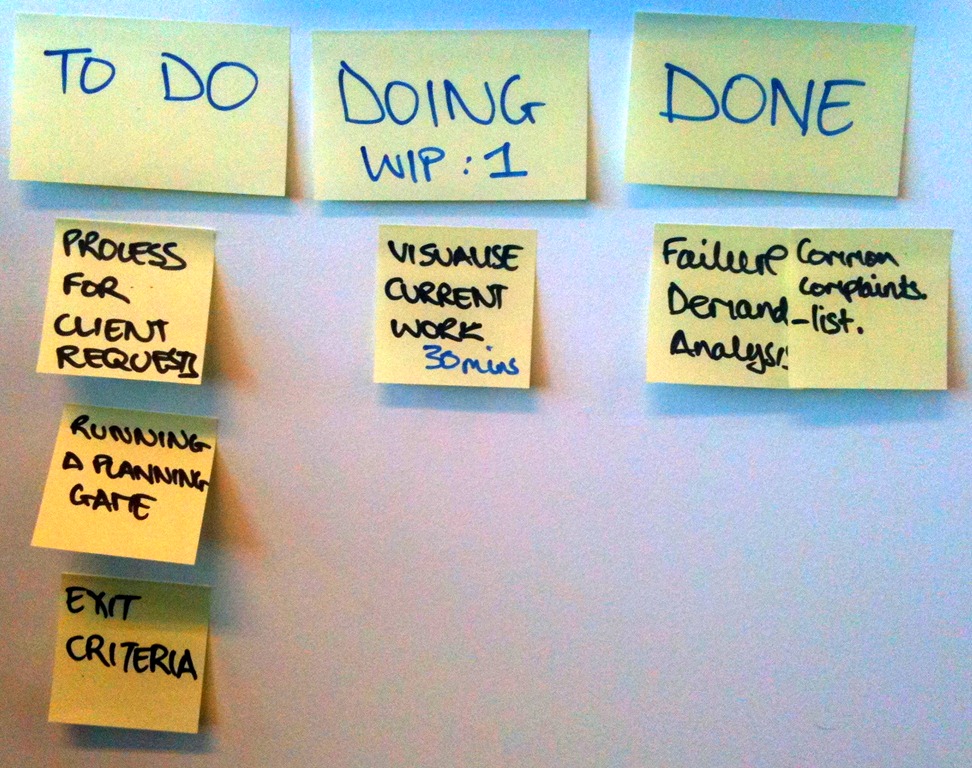An Introduction to Kanban

Kanban is a project management framework that works especially well for small, fluid teams working on fast-paced or short-term projects. In this post, I’ll give a quick overview of the kanban process, discuss the 6 core practices of kanban, and talk a bit about the key differences between kanban and the more ubiquitous scrum methodology. I’ll also provide some tips for determining whether kanban is a good fit for your team or current project.
What is kanban?
The kanban methodology dates back to the 1940s, when it emerged as part of the Toyota Production System’s lean manufacturing practices. The Japanese word “kanban” literally translates as “sign, billboard, or visual signal”, and was used to refer to the process of visually scheduling tasks and tracking inventory as it moved through the production process.
Today, a “kanban board” is a project management tool that uses cards and columns to help teams visually commit to an appropriate amount of work — and then get that work done. Most kanban boards use three vertical columns for tasks that are “to do”, “in progress”, and “done”. Tasks are represented by cards, which start out in the “to do” column and move across to “in progress” and “done” as the project advances (this process is known as “Flow”).

Some teams prefer to create physical kanban boards using post-its and posters or whiteboards, but there are also a number of digital tools available (Trello is one popular example).

The 6 core practices of kanban
A kanban board can help you streamline anything from a major corporate project to a personal to-do list. Regardless of the project, the same core kanban practices will apply:
- Limit work in progress (WIP). You want to see cards moving steadily across the board, so pay attention to WIP limits to cap the maximum number of cards that can be in a column at any given time.
- Visualize work. Create a card for every single task, and review the board as a team so that everyone is on the same page about the status of the project.
- Manage flow. “Flow” is the process of cards moving across the board. Steady flow is important; pay attention to cards that seem “stuck”, and work with your team to understand what’s blocking them.
- Make policies explicit. Everyone on your team should have a basic understanding of the kanban process, and should be able to follow a consistent protocol for adding tasks and moving cards across the board.
- Implement feedback loops. Have “done” tasks reviewed regularly by internal experts, external stakeholders, and automated tests. If a task that you thought was complete needs further attention, add new “to do” cards accordingly.
- Improve collaboratively and evolve experimentally. As a team, you should continuously critique your process for adding and addressing tasks, and make changes to improve clarity and efficiency. For example, if you’re taking a long time to move cards to the “done” column, you may need to break them out into multiple cards representing smaller, more specific tasks.
Kanban vs. scrum
Kanban is sometimes referred to as a “lite” version of more traditional agile methodologies, including the popular scrum methodology. Here are a few of the key differences between kanban and scrum:
- Start and stop dates: Scrum sprints have specific start and stop dates, but kanban is usually a more fluid, ongoing process that can be used for the entire lifecycle of a project.
- Time estimates: Since kanban doesn’t require the team to commit to clearing a backlog of tasks in a specific duration (e.g., a two-week sprint), it’s less important to estimate the amount of time each task will take.
- Roles and responsibilities: Team roles are clearly defined in scrum (e.g., scrum master, developers, and QA), but in kanban, it’s less common for team members to take on formal roles. Instead, everyone is assumed to be equally responsible for ensuring that tasks are accomplished.
Should you use kanban?
Kanban has a number of advantages — it’s flexible, easy to understand, and helps teams clearly visualize and align on their progress and priorities. However, it’s not necessarily a good fit for every project, and it may actually be too flexible for some projects or teams.
A project is probably well-suited to kanban if:
- Tasks are largely independent, such that they don’t need to be completed sequentially; if you’re working through sequential tasks, you might find it easier to set up time-boxed sprints.
- Your team doesn’t have tightly-defined roles and most members are equally able to work on most tasks.
- You need to provide frequent on-demand updates for stakeholders — the balance of “to do/in progress” vs. “done” cards on a kanban board is an easy-to-interpret visual that many stakeholders appreciate.
- You’re committed to continually reviewing and updating the kanban board. Like any methodology, kanban only works if you use it! And since you don’t have regular reminders in the form of sprint deadlines, you need to be vigilant in keeping things up to date.
Kanban resources
If you’d like to learn more about kanban, there are a few resources I’d recommend:
- Atlassian’s “What is a kanban board?” page, which includes a video and detailed text overview
- Kanban University, which offers a variety of resources including a professional kanban certification
- Scrum.org’s Professional Scrum with Kanban Certification
